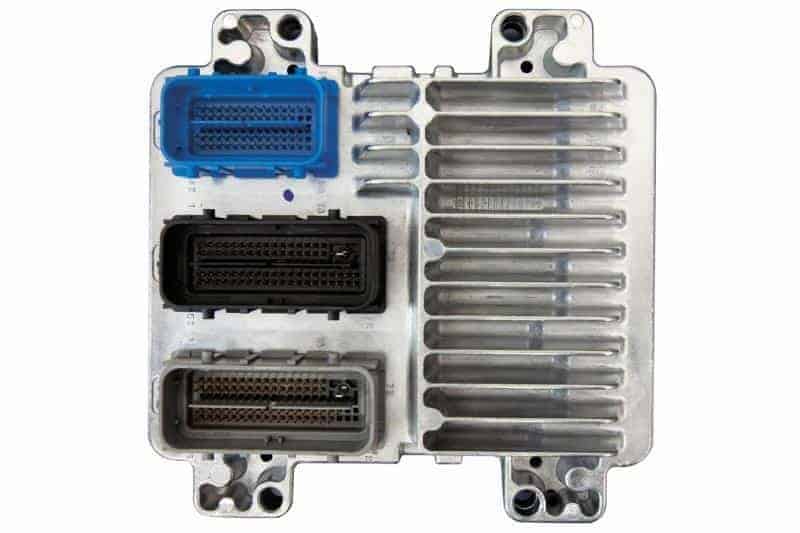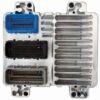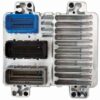Is Your GM Vehicle Experiencing Engine Problems?
If you’re dealing with a rough idle, stalling, poor fuel economy, or a persistent Check Engine Light that just won’t go away, the root cause might be a failing Engine Control Module (ECM). The ECM is the brain of your vehicle’s engine, responsible for managing everything from fuel injection and ignition timing to emissions controls and transmission shifting. When it starts to fail, it can create a cascade of frustrating and difficult-to-diagnose issues. This isn’t just an inconvenience; it can affect your vehicle’s reliability, performance, and ability to pass emissions tests.
From the Diagnostic Bay
I once had a 2008 Chevy Impala come into the shop with a random misfire code (P0300) that the owner had been chasing for months. He had replaced the spark plugs, ignition coils, and even the fuel injectors, but the problem persisted. After hooking up the scan tool and watching the live data, I noticed the injector pulse width for cylinder 3 was erratic. Instead of continuing to throw parts at it, we tested the driver circuit within the original ECM. Sure enough, the driver was failing intermittently under load. We installed a VIN-programmed replacement module, performed the necessary security relearn, and the car ran perfectly. It’s a classic case of symptoms pointing to one thing, while the real culprit is the component controlling it all.
Why Choose a VIN-Programmed ECM?
This isn’t just a generic, off-the-shelf computer. This module is a direct-fit replacement for a wide array of General Motors vehicles, and its key benefit is our professional programming service. Before we ship it, we flash the unit with the latest, most stable software updates directly from GM, tailored specifically to your vehicle using its unique Vehicle Identification Number (VIN). This critical step ensures that the ECM communicates perfectly with your car’s specific systems, including the anti-theft system (PassLock/VATS), transmission, and all factory-installed options. You get a component that is ready for installation, saving you a costly trip to the dealership for programming.
Identifying a Failing 2006 Cobalt Engine Module
A faulty ECM can manifest in numerous ways. While a proper diagnosis with a professional scan tool is always recommended, here are some of the most common signs that your engine computer may be the problem.
- ✔ Check Engine Light: The light is on, and you may have codes related to sensor circuits (e.g., P0101, P0121), communication errors (U-codes), or internal processor faults.
- ✔ Engine Stalling or Misfiring: The engine may stall for no reason, either while driving or at idle. You might also experience rough running or misfires that new plugs and coils don’t fix.
- ✔ No-Start Condition: The engine cranks but refuses to start. This can happen if the ECM isn’t properly controlling the fuel pump or ignition system.
- ✔ Poor Performance and Fuel Economy: A noticeable drop in power, hesitation during acceleration, and a sudden decrease in miles per gallon can all be linked to a malfunctioning ECM.
- ✔ Harsh or Erratic Shifting: The ECM works in tandem with the Transmission Control Module (TCM). A fault in the ECM can lead to poor communication and result in incorrect shifting patterns.
- ✔ Intermittent Issues: Problems that come and go with changes in temperature or engine load are classic signs of internal electronic failure within the module.
Guaranteed Compatibility and Functionality
This Engine Control Module, part number 12602044, is a genuine GM service component that is interchangeable with a wide range of other service numbers, including 12590032, 12603530, 12605843, 12607096, 12630457, and 19210737. This ensures it is the correct replacement for dozens of models across the GM family, from a 2006 Cobalt to a Cadillac DTS or a GMC Envoy. By providing your VIN, you guarantee that the software loaded onto this hardware is a perfect match for your vehicle’s build sheet, restoring its original performance and reliability.
Frequently Asked Questions
Do I need to program this ECM?
No. We handle the programming for you before shipment. You must provide us with your vehicle’s 17-digit VIN after purchase so we can load the correct GM software and updates for your specific car or truck.
Is this a plug-and-play part?
For most vehicles, yes. After physical installation, you will likely need to perform a simple “security relearn” procedure, which pairs the new ECM to your vehicle’s anti-theft system. This procedure typically involves turning the key on and off in a specific sequence and does not require special tools. We can provide instructions for this.
Where is the ECM located on a 2006 Chevy Cobalt?
On the 2006 Chevrolet Cobalt, the Engine Control Module is typically located in the engine bay, on the driver’s side, mounted to the front of the underhood fuse block assembly.
Will this fix my specific problem?
This part is a direct replacement for a faulty ECM. While it resolves the many issues caused by a failed module, it’s crucial to ensure your vehicle has been properly diagnosed. This part will not fix problems caused by other faulty components like bad sensors, wiring issues, or mechanical failures.
What is a VIN and where do I find it?
The VIN is your Vehicle Identification Number, a unique 17-digit code for your car. You can find it on the driver’s side of the dashboard (visible through the windshield), on the driver’s side door jamb sticker, or on your vehicle’s registration and insurance documents.


